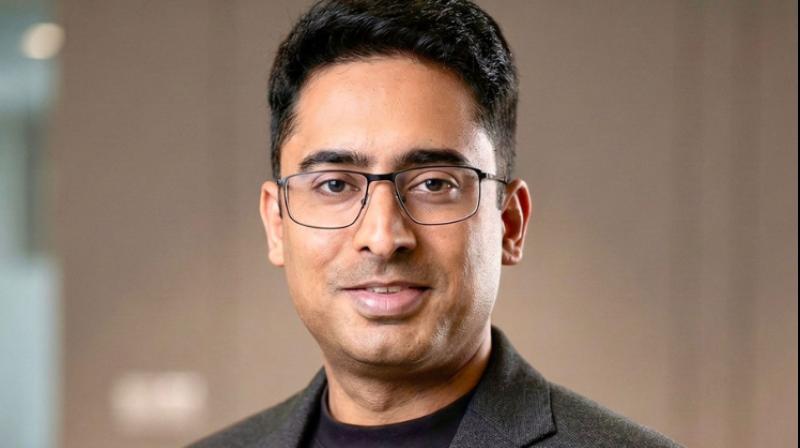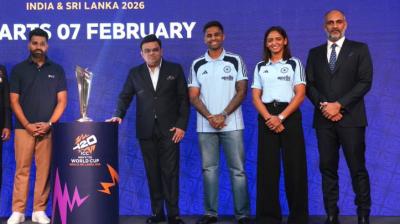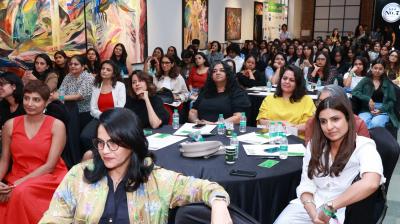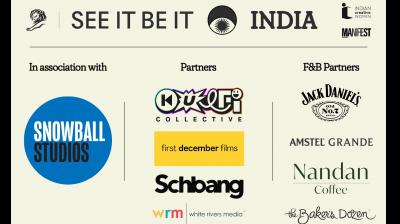Snapchat has launched ‘Say It In A Snap’, which is a global proposition finally brought to the nation and is a celebration of Gen Z’s unapologetically visual way of expressing identity, humour, connection, and culture.
Conceptualised by Toaster, the campaign consists of an ad film. The agency also led Snapchat’s debut campaign for India, rolled out in July as an OOH initiative.
The film Say It In A Snap shows how real connections unfold across the places, moments, conversations, and brands Gen Z cares about. Featuring Indian Snapchatters, it celebrates a generation that communicates with creativity, humour, and honesty. It aims to showcase that when brands understand where these audiences are and how they express themselves, everyday moments can turn into cultural currency. Built for users, creators, and advertisers, the campaign highlights how Snaps have become a language of their own, quick, creative, and far more expressive than text.
To unpack the thinking behind the new campaign, Snapchat’s strategy for India, and why visual communication is becoming the foundation of modern culture, we sat down with Ankit Goyle, head - marketing, Snap Inc. India.
Edited excerpts:
You launched the debut campaign in July for OOH. What kind of impact have you seen since then, and how has the messaging landed with the audience?
The July campaign, largely OOH-led, was designed to give advertisers data points, break a few myths, and inject a bit of quirkiness into the conversation before the festive season kicked in. It worked really well. Brands across the ecosystem partnered with us throughout the festive period. Even though it was a shorter festive window this year, we worked with a wide range of brands on their Gen Z goals, and the campaign delivered strongly.
A lot of marketers I’ve spoken to since the WPP Media, Snapchat, and Lumen report agree that attention metrics are overdue. How have brands responded, and how has the conversation evolved since the report launched?
After the attention report launch with WPP and Lumen, we brought some of the largest brands into the room, and it sparked a lot of important conversations. Many brands are now partnering with us on attention planning. That means they run their usual digital campaigns and brand lift studies, but also layer on attention measurement through partners like Lumen.
It becomes an additional lens in the same digital plan. Several campaigns are being measured right now. While we can’t name the brands yet, we’ve seen large advertisers, especially performance-driven ones, adopt attention planning and already see early wins.
Is there any specific Gen Z trend you’re seeing that can help marketers connect more effectively with this cohort?
The first thing is that Gen Z is incredibly visual. The second, and just as important, is their authenticity. One of our reports with a major Indian publication highlighted something surprising: Gen Z sees home-cooked food as their fuel. We assumed they’d be ordering in more, but because they’re health-conscious, ghar ka khana (home food) is actually their go-to.
It shows how many myths fall apart when you actually spend time with them. Their world revolves around close, inner-circle conversations. And they’ll surprise you if you’re paying attention.
Among the clients and brands on Snapchat, what’s one common mistake you see when it comes to advertising on the platform?
One of the biggest mistakes is taking a TV creative, copying it, and pushing it out everywhere, including Snap. Or lifting something built for another platform and dropping it here without considering how people actually communicate on Snapchat.
For years, digital meant creating one asset and blasting it everywhere. That was the old playbook.
With the latest campaign, we want to shift that mindset. If you want to show up in real conversations, one has to create the environment. Some of India’s most iconic brands have done exactly that with this campaign, which is why they appear naturally in Gen Z’s everyday conversations.
To reach meaningful scale, one needs multi-format storytelling, not a flood of messages, but curated communication that feels authentic. When marketers do that, they light up in the moments that matter.
How has the Snap AR format performed for brands, and can you share an example of a brand that’s scaled its business using it?
One stat I’ll leave you with: users in India are engaging with Lenses 80 billion times. That’s 80 billion Lens plays every month; the scale is massive. Naturally, that opens a huge opportunity for brands.
Take Myntra, for example. They’ve leaned into a mix of AR and video on Snapchat, and the impact has been clear: they’ve seen a 3X improvement in ROAS (return on ad spend) from those campaigns.
Lastly, what are the key focus areas going into next year for the Indian market?
Our focus continues to be on our three core audiences.
First, users, we’re committed to growing our base and strengthening real connections.
Second, creators, we’re onboarding new creators continuously, and our creator ecosystem has doubled over the last couple of years. Through our 'Snap Star' programme, creators receive a badge, added benefits, and mentorship from Snap.
Third, advertisers, we have a strong, growing advertiser ecosystem. Name the brand, and chances are they’re already working with us. Our approach isn’t one-size-fits-all. Our sales teams work closely with marketing teams across industries to help solve genuine Gen Z challenges.










